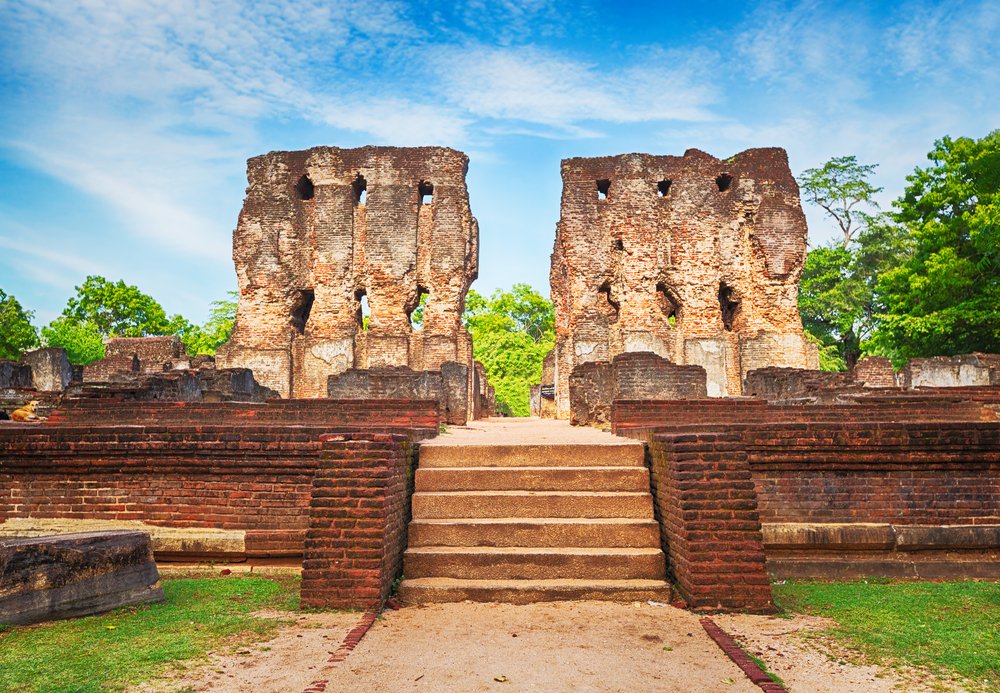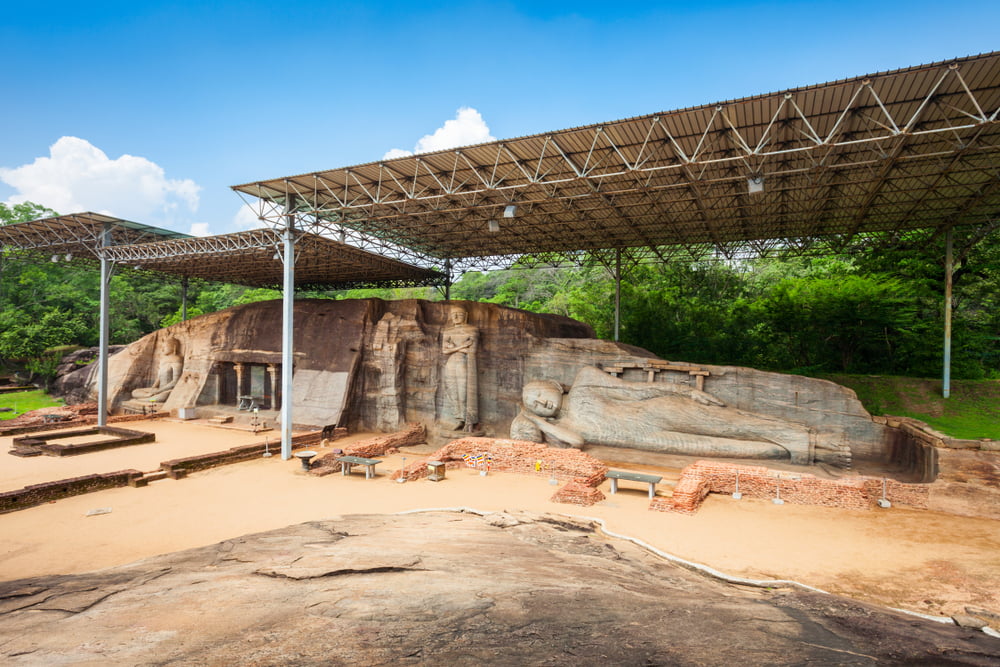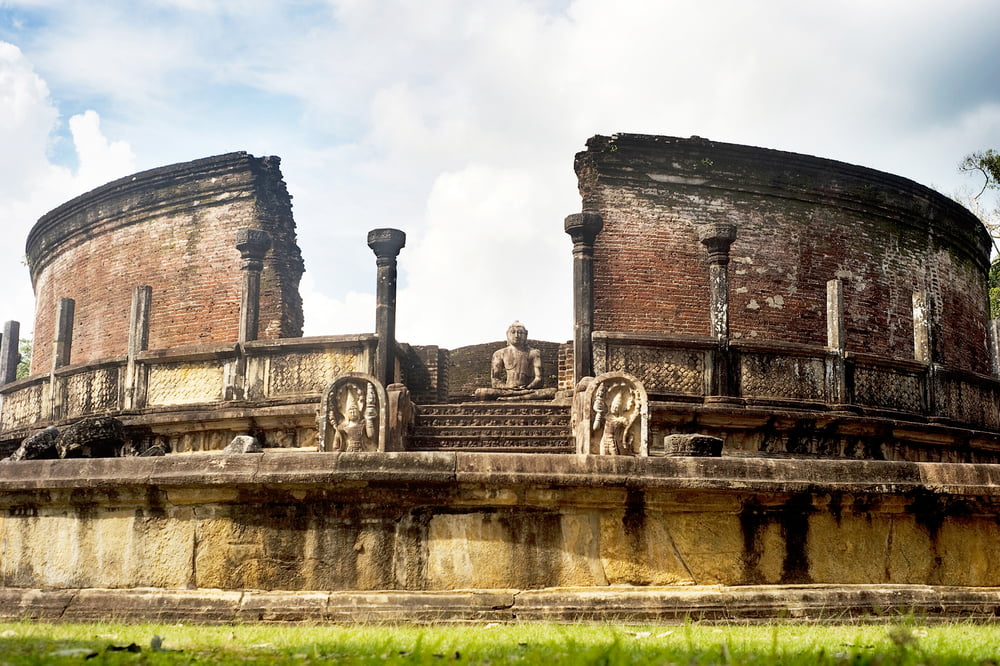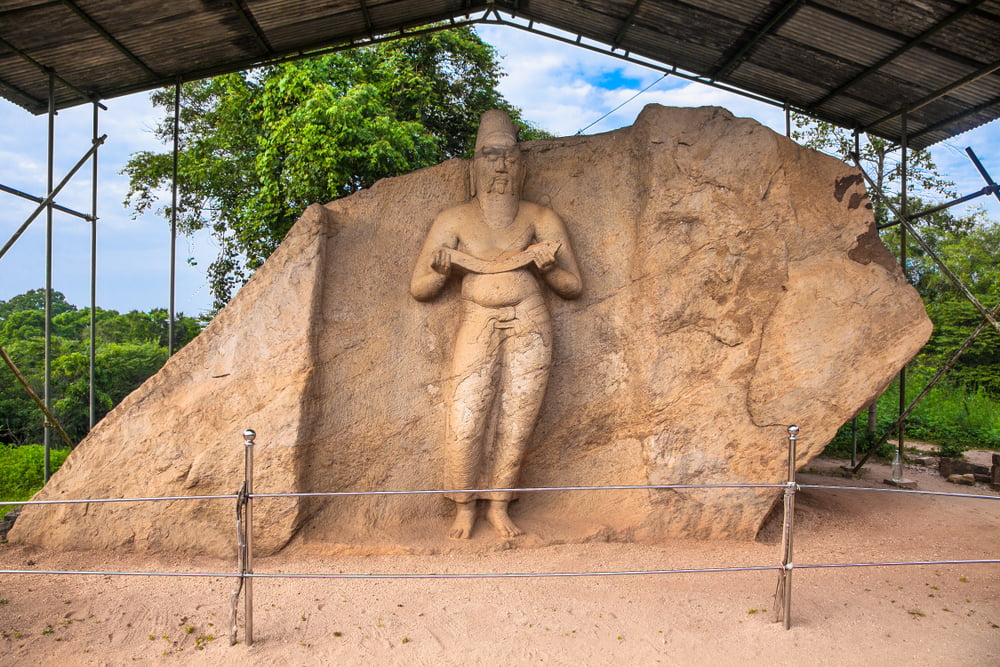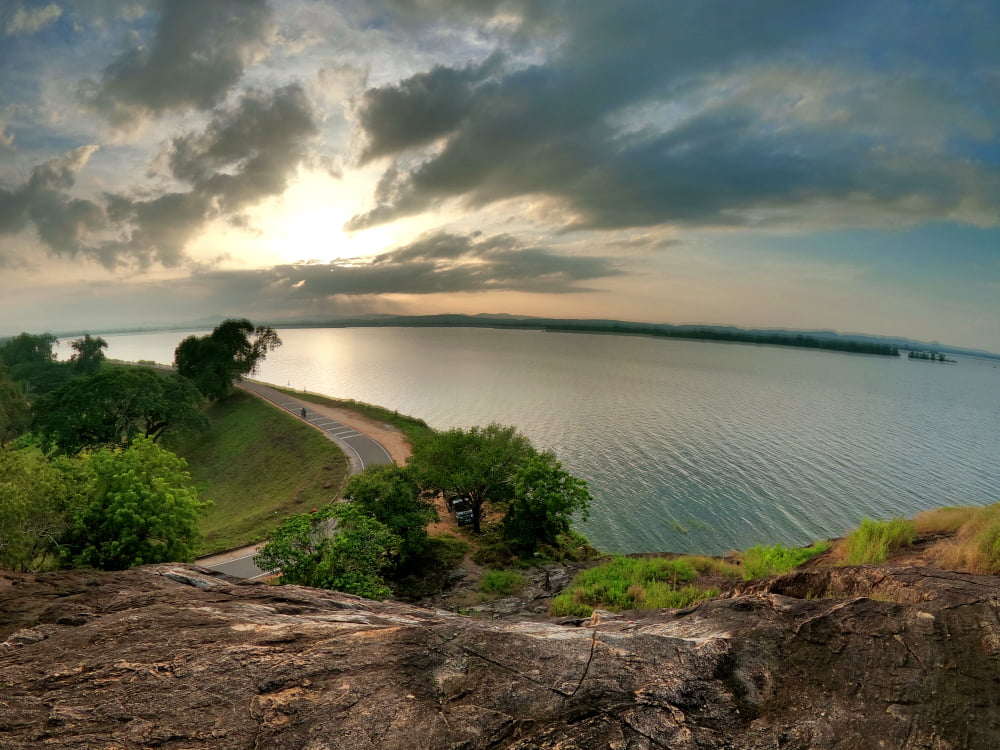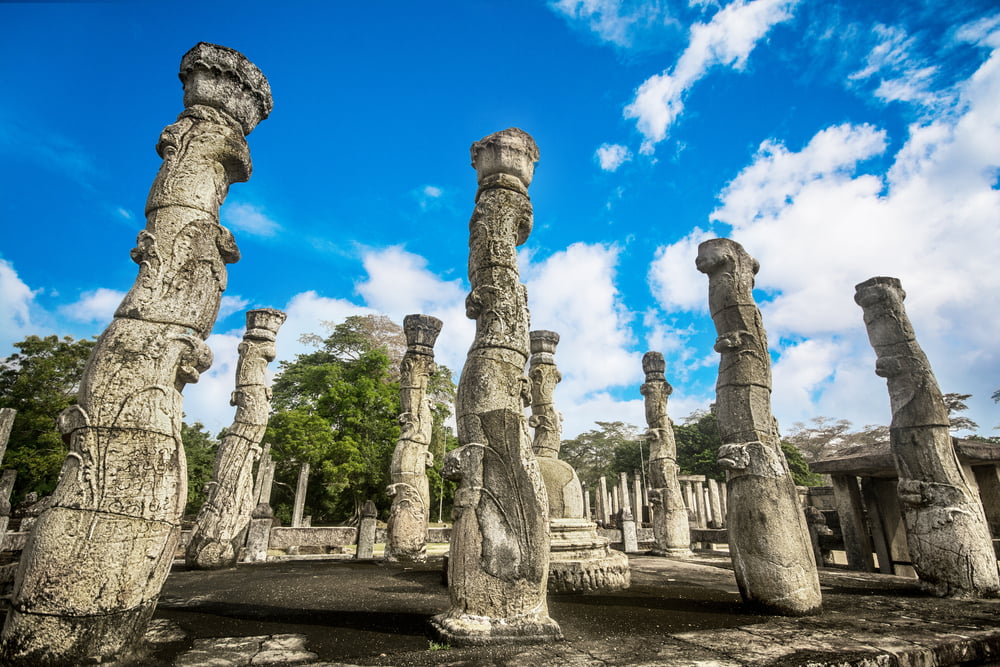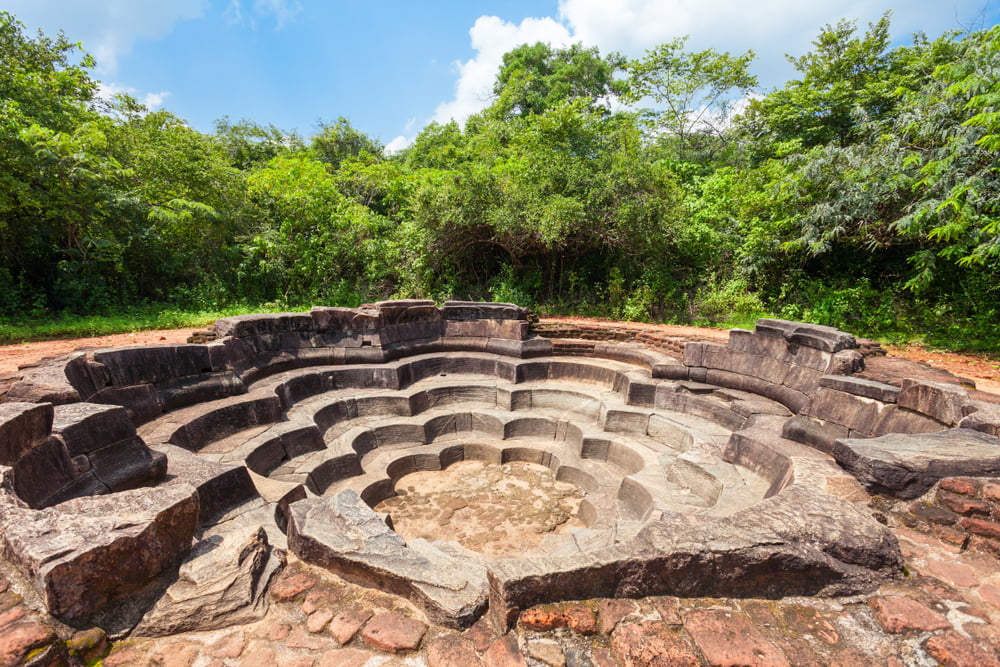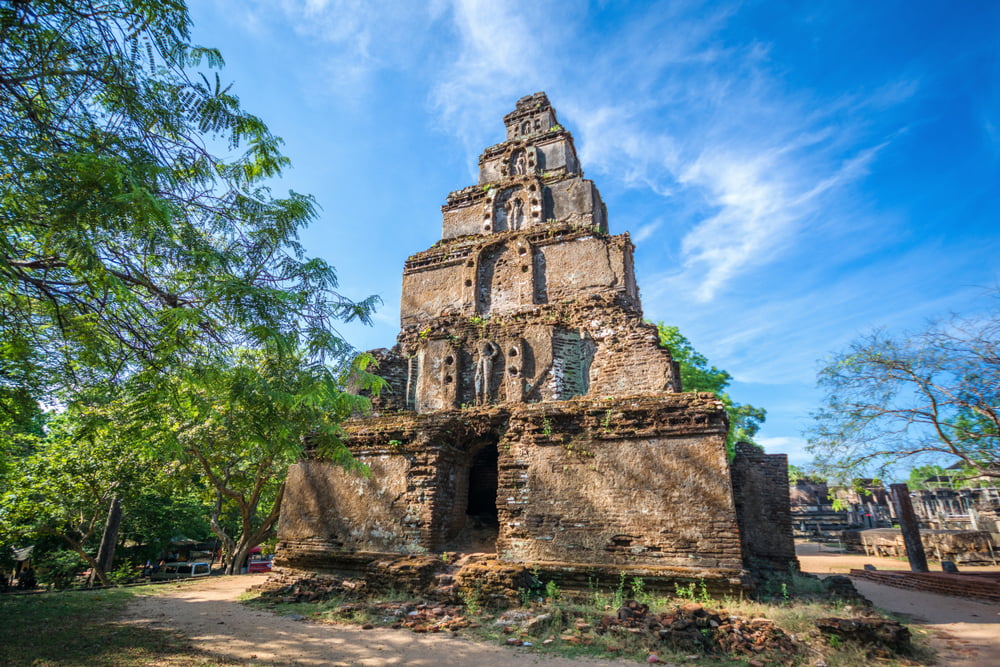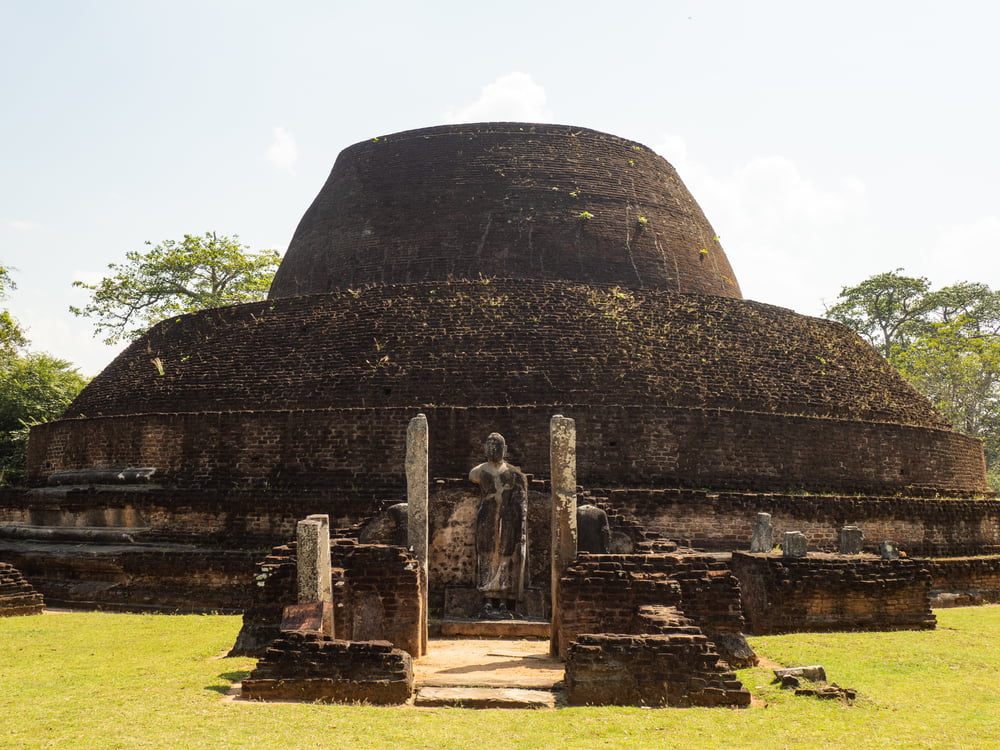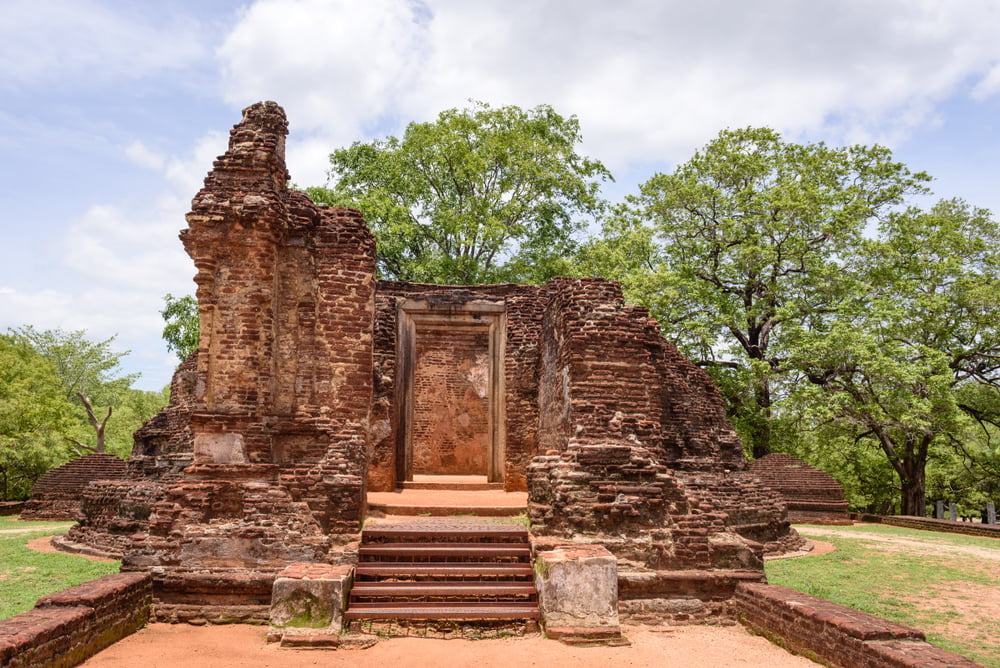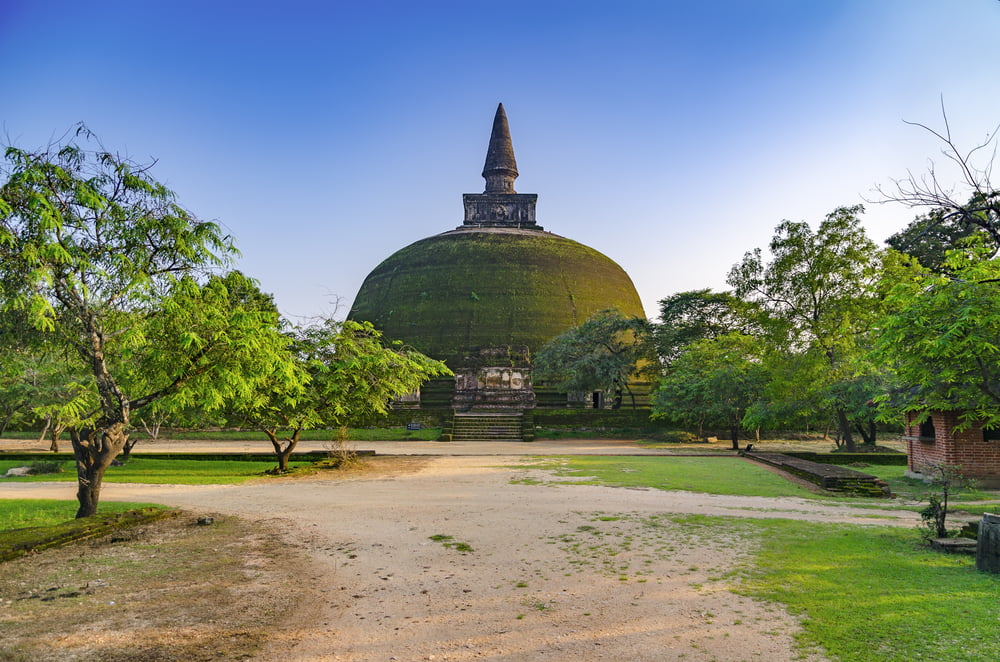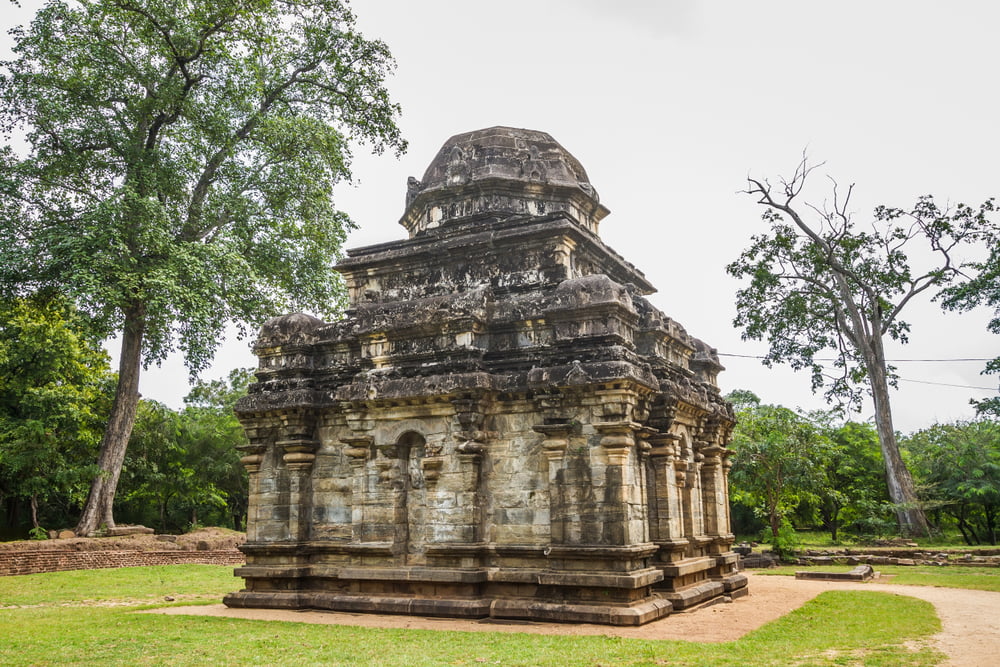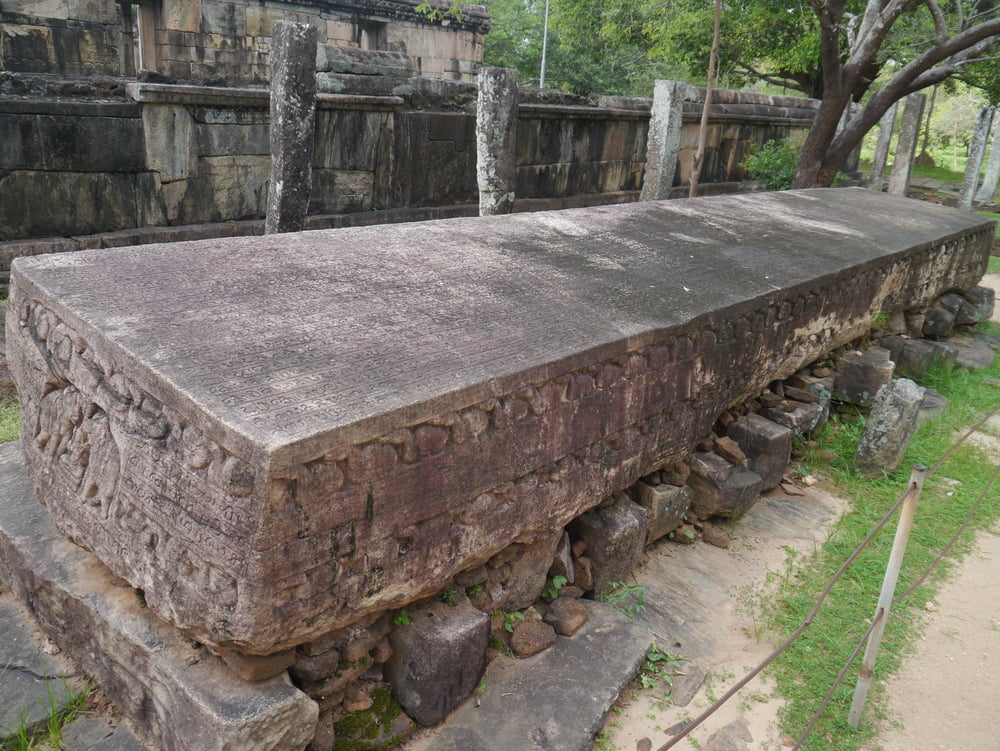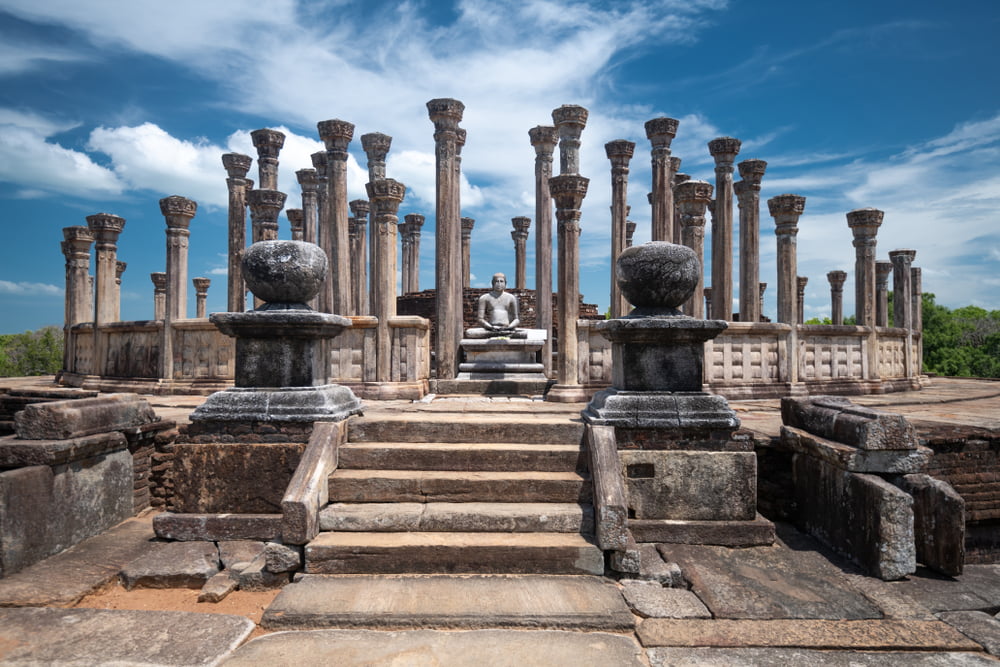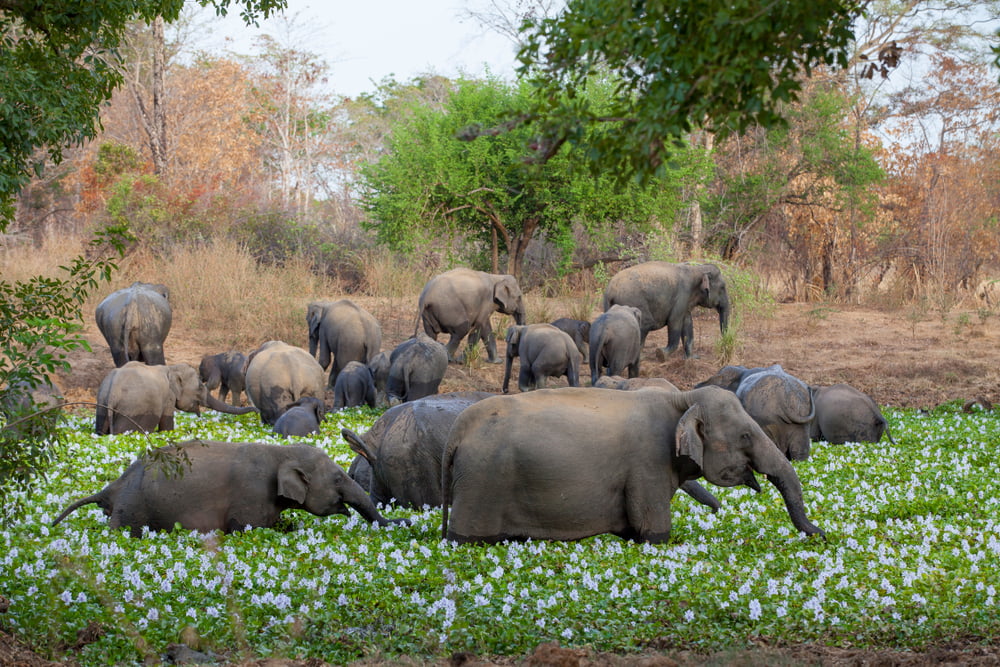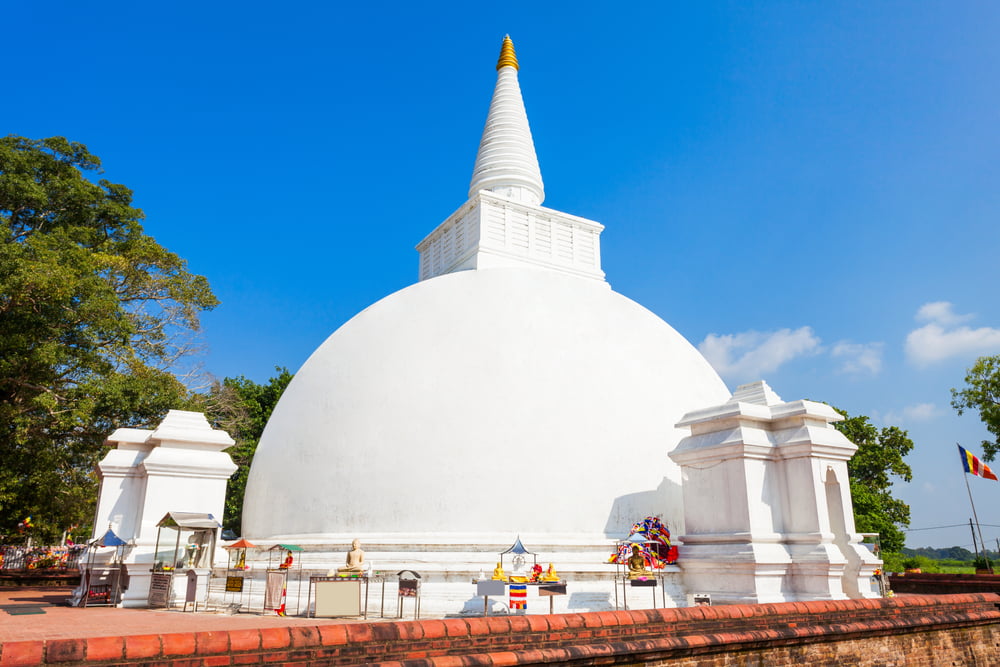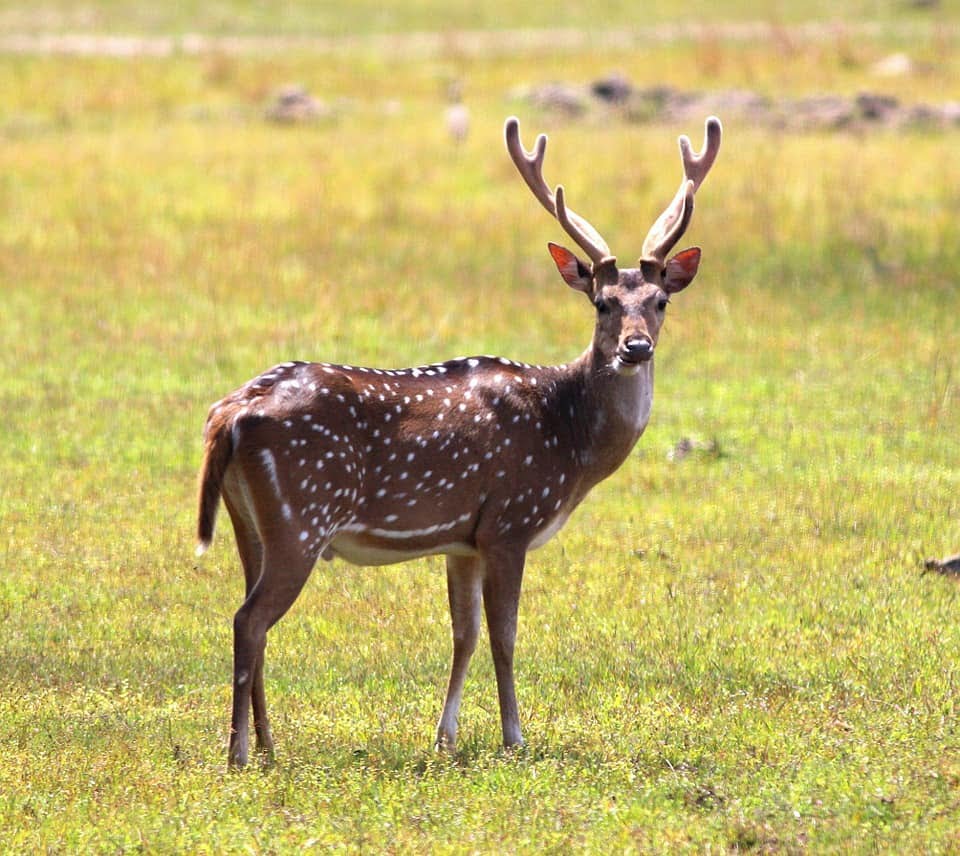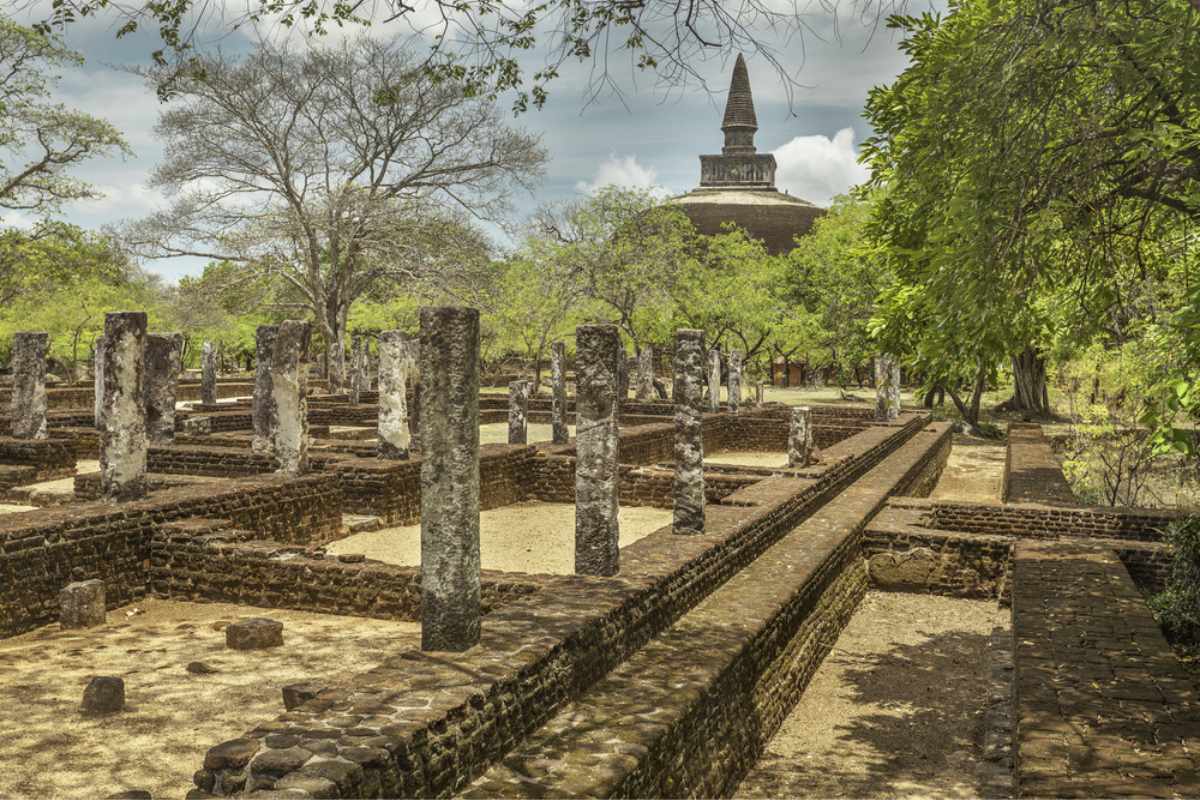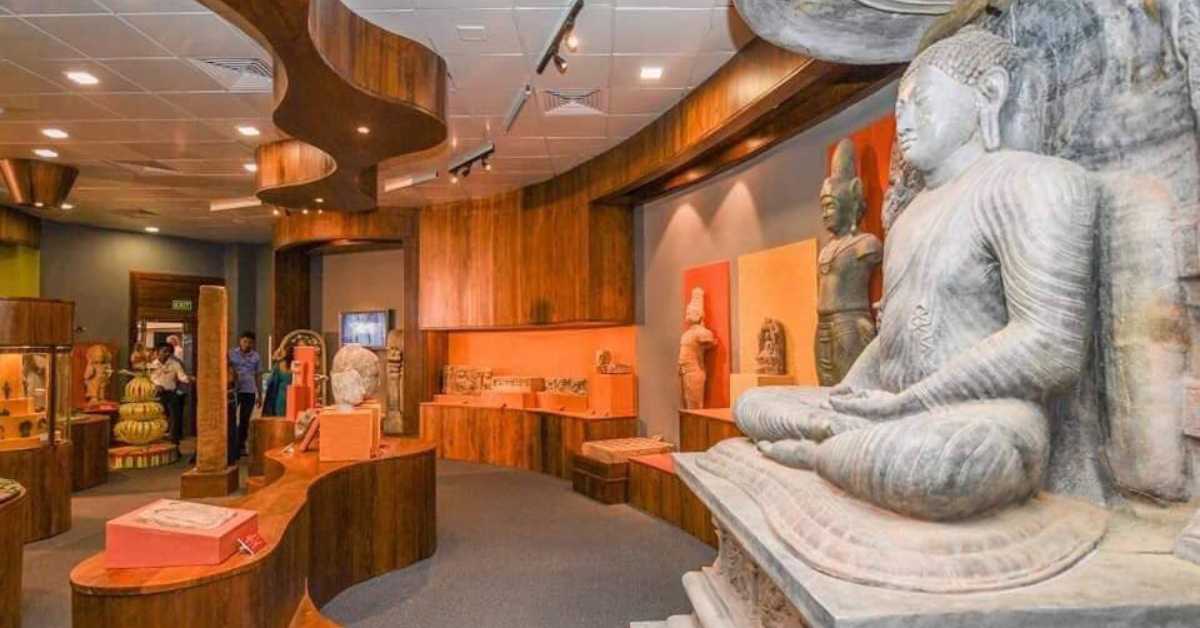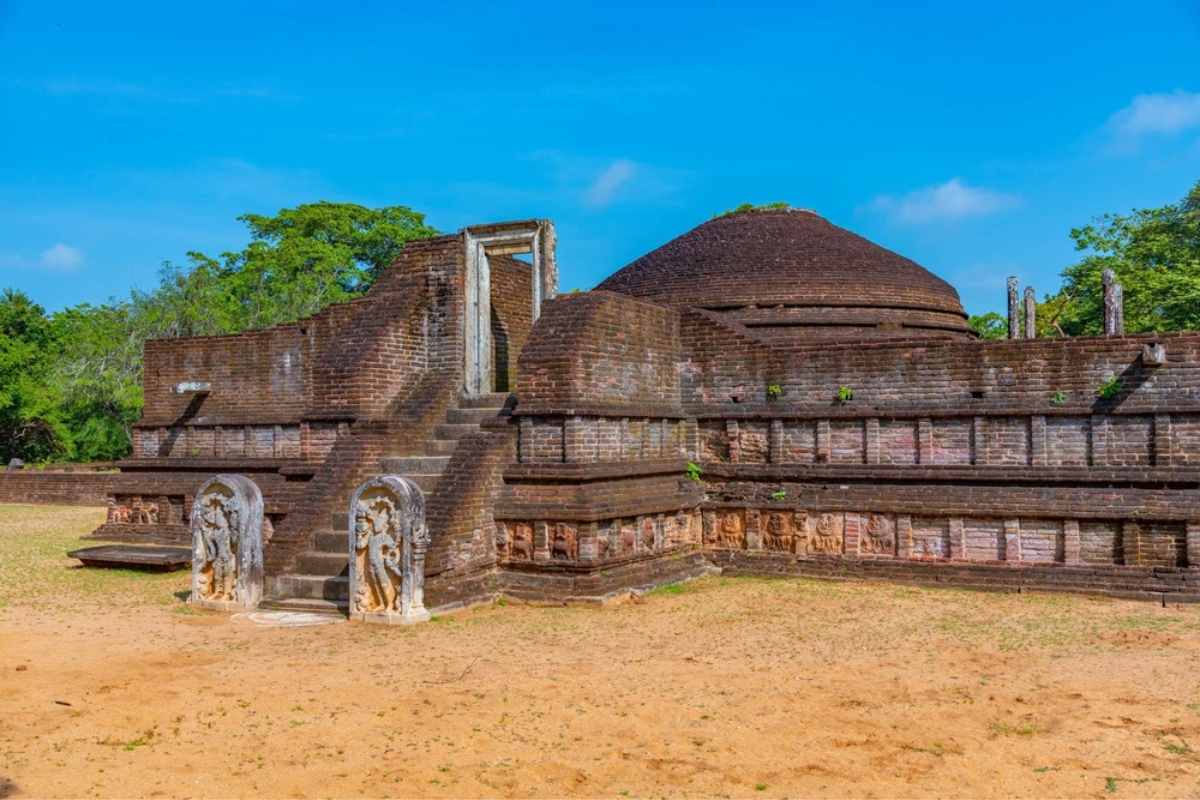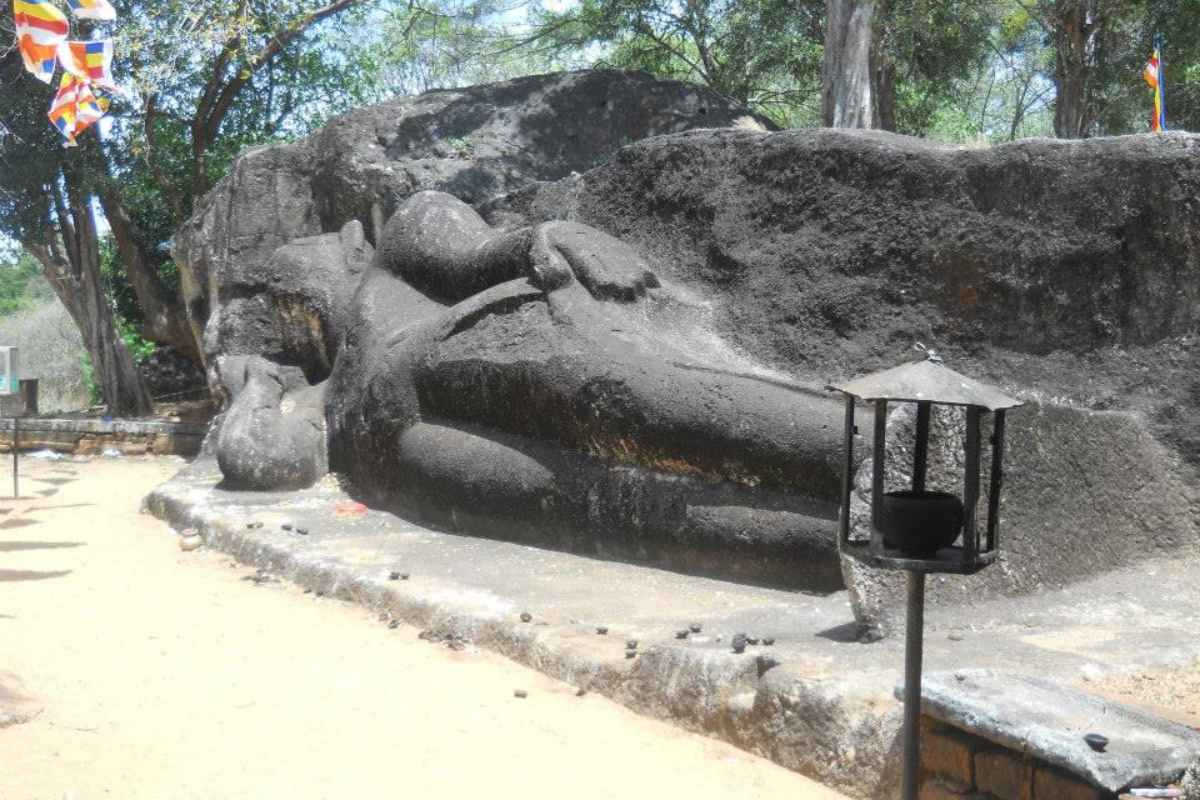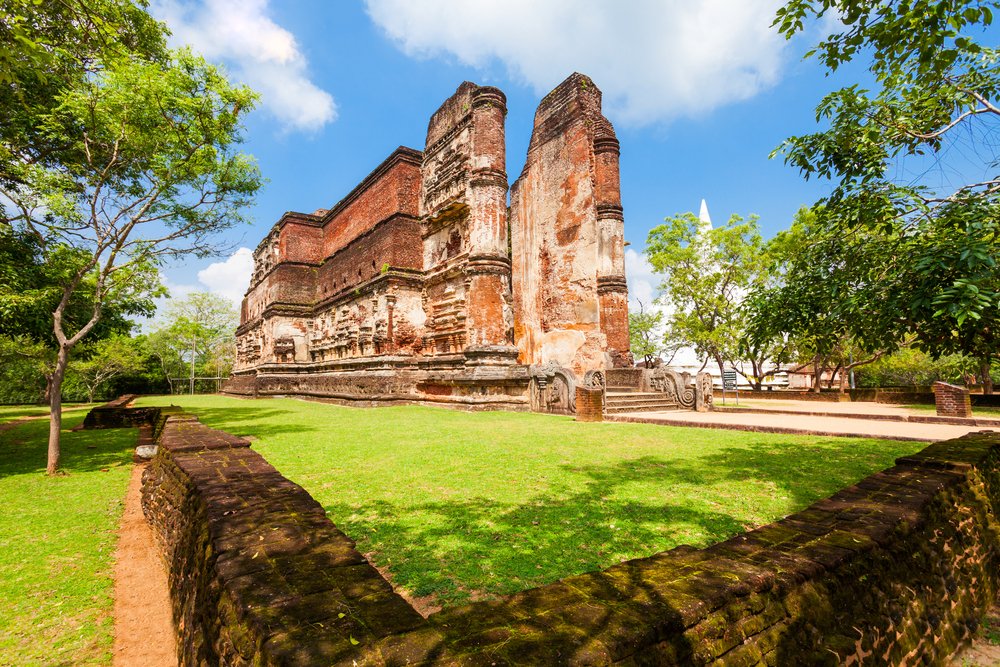
Brief Guide for Sites to Visit in Polonnaruwa
Discover the variety of attractions in Polonnaruwa during your vacation in the Cultural Triangle of Sri Lanka. From visiting the iconic remains of the ancient kingdom like the Palace of King Parakramabahu to venturing on an exciting wildlife national safari parks like Minneriya, Angammedilla, Wasgamuwa. There are a variety of attractions to visit as you travel to Polonnaruwa.
Found just over 3 hours northeast of Kandy, Polonnaruwa puffs of immense historical, cultural, and architectural value are a place you shouldn’t miss!
Sri Lankan technicians and artisans built unique, breath-taking constructions in ancient society. Formulated with bricks and carved with stones, these productions observed in the ancient city of Polonnaruwa continue to astound the world. Here are some of the finest places to visit in Polonnaruwa.
1.Royal Palace
The Royal Palace is even comprehended as the Vijayotpaya, a seven-storied structure built by King Parakramabahu the Great in Polonnaruwa.
The Palace was assumed to have been built in the late 1100s, and as you enter, you can see three levels of bricks, and you will see cavities in them. It is articulated that these must have been used for wooden beams that are currently rotted. These wooden shafts must have been sustained to hold the wooden foundations.
2. Gal Viharaya
The Gal Vihara or Gal Viharaya temple is named so because of the Granite/Rock. (rock pronounce in Sinhala language Gal ) face used to carve out the four icons. It held a part of “Uttararama”, also known as the north monastery in Polonnaruwa city. The models/sculptures described at Uttararama show some crucial exceptions, possibly following an entirely diverse technique from the previous Anuradhapura era. The broader forehead in the Gal Vihara is one of the unique models of this, the carving of robes with two identical lines rather than using a single line as standard in the Anuradhapura period uplifted by the Amaravati school of art.
Likewise, the standing statue’s description has been a contention amongst archaeologists and excavators.
Interestingly, all images have been shaped to get used to the height potential area of the rock, with the rock’s height deciding the size of carvings. In addition, the remains of brick walls at Gal Vihara indicate that each statue was manipulated to have its own image house. More Details
3. Polonnaruwa Vatadge
The Polonnaruwa Vatadge is an old structure located in a quadrangular region, Dalada Maluva in the ancient city of Polonnaruwa in Sri Lanka. The Vatadage holds most of southwestern Dalada Maluva and is prominent among other oldest and most sacred shrines. The Vatadage has a similar design to the structures relating to the Anuradhapura period, particularly Thuparamaya and Lankaramaya.
The Polonnaruwa Vatadage has two stone platforms enriched with elaborate stone carvings. The lower one is accessed through a single entry facing the north, while the second is entered by four doorways facing the four cardinal features. This floor houses the stupa, which is enclosed by brick walls. The Buddha statues are built around the wall facing the four cardinal features. More Details
4. King Parakramabahu statue
The King Parakramabahu statue is an excellent statue overlooking the extensive Parakrama Samudra Reservoir in the ancient city of Polonnaruwa. The figure is found in the region of the Pothgul Vihara complex and was constructed by King Parakramabahu I. Seldom it is assumed that the Parakramabahu statue is a portraiture of the noble king. Moreover, it is sometimes thought of as a sage, a Pulathi Rishi statue. The figure itself is shaped into a giant rock during the 12th Century AD. It is one of the most well-made stone statues referring to this age. Close to twelve feet tall, this sculpture is of a man with a grave but a wise appearance with half-closed eyes and a sad smile as he holds from what most think is a manuscript he has in his arms at around chest height.
Man is bare-chested but for a thread thrown over his left shoulder. His load is borne by one of his feet and somewhat of both. Archaeologist Prof. Senarath Paranavithana concludes that this statue is an expression of power and nobility, whatever unique identity of the person and whether or not it is an official portrait of someone of the time. It is amongst the many cryptic and thought-provoking sculptures from Polonnaruwa. More Details
5. Lankatilaka Temple
Lankatilaka Temple is one of the most symbolic buildings of the ancient empire of Polonnaruwa. A couple of great walls, each with a diameter of 4m & 17m, form a narrow path leading to a very majestic, though presently headless Buddha statue standing over 14m high. Built by King Parakrabahu, the shrine is a visible difference in terms of Buddhist architecture. Instead of the symbolic stupa, the consideration is directed toward the giant figure of the Buddha, which fills up the whole space within the shrine. More Details
6. Parakrama Samudraya Reservoir
Parakrama Samudraya Reservoir( wewa) in Polonnaruwa was built by King Parakramabahu the Great (around 386 AD); it is a massive tank that once encompassed five large reservoirs. Engineers today say that this intelligent design feature was used to relieve the pressure on the main dam, and many are baffled by the sheer volume of this feat.
Their purposes have still not been speculated, including the remains of sluice gates on the dam, plenty of other mysterious design elements, and ruins found across the banks. Apart from its engineering brilliance, the reservoir today has become a quintessential part of the region’s ecosystem, and thus it supports a wider variety of birds and animals. Furthermore, it has become a popular tourist attraction in the area where travellers could embark on a boat ride amidst the tank’s surreal waters. Of course, you could see a part of the reservoir from the comfort of our resort establishment, but if you wish to explore more of it, tours to the reserve along with boat rides can be arranged by reaching out to the front desk. More Details
7. Nissanka Latha Mandapaya
Nissanka Latha Mandapaya is one of the more unique constructions made by King Nissanka Malla in the 1100s; the Nissanka Latha Mandapaya is assumed to be the discussion house for Buddhist chanting (pirith) and still stands as an essential masterpiece that showcases how the religion of Buddhism influenced society back in the day. The memorial is located at the western end of the ‘Dalada Maluwa’ (where the Sacred Tooth Relic was housed), making its consequence all the more important in the annals of the Sri Lankan story. The complex is also recognised to be the ‘King’s Court’ by some archaeologists.
Its highlighting determinant is its open-air design, which possesses some unique resembling pillars crafted to depict blossoming lotus flowers. Moreover, This is because other features of interest have been preserved over time. But, at the same time, unique features were destroyed due to the constant invasions of the Chola during the 14th century. Therefore, the details of the building, especially the stone columns, are reflected the most significant standards of the ancient architectural techniques on the whole island, according to the famous archaeologist Prof Senarath Paranavithana.
8. Nelum Pokuna (Lotus Pond)
Nelum Pokuna (Lotus Pond) is an old pool with a novel object built by early Sri Lankan architects. It is found in the ancient capital of Polonnaruwa in North Central Province, Sri Lanka. The pond got its title because of its design which looks like a blossomed lotus flower. This pond is slightly little matched to the other ponds in the ancient city of Polonnaruwa, built with rocks. The architectural design of the Nelum Pokuna Theatre in Colombo also has been invigorated by this Lotus Pond. More details
9. Sathmahal Prasadaya
Sathmahal Prasadaya is a pyramid-shaped, seven-storied building, a primarily shaped stupa built through the Polonnaruwa Period (11th -13th century).
There are four known square-shaped Stupas in Sri Lanka. The most famous is the Sathmahal Prasadaya. The rest of the three stupas can be found in the ancient Anuradhapura kingdom, infrequently visited by travellers. One of these stupas is Nakha Vehera. The other two belong to the Abhayagiriya Monastic Complex. One of them is known as Eka Prasada Stupa. The other occupies Eth Pokuna on the western edge of the Abhayagiri Monastery.
It is said that comparable Stupa’s to Sathmahal Prasadaya can be observed in Cambodia and Siam. It is believed this has been established for the Cambodian soldiers working under the king as worship. The temple has four entrances from four sides. Additionally, there is a staircase to reach the upper levels. However, the person who built it, the initial name of it or the purpose is yet a puzzle. More Details
10. Pabalu Vehera Dagoba
A remarkably formed brick structure, the Pabalu Vehera was probably named by Queen Rupavati, one of the wives of Parakramabahu of Polonnaruwa. The title Pabalu Vehera comes from the glass beads found in the area of the monastic complex, while the original name of the place is undiscovered. We see from the outside that this slightly majestic building is like a stupa atop a secondary stupa, a queer object not seen everywhere in the country. The top and much of the centre of the building have been damaged almost lately and in the past by foreign attacks and treasure hunters. It is most likely to have been incorporated with plaster and whitewashed beautifully during its time. Another characteristic of the site was the number of image-houses encompassing the main structure in the middle of the field, the stupa itself. Usually, there would be four in the four cardinal directions, but here there are nine.
Some of them yet preserve Buddha images. Amongst these are standing and seated statues and a few reclining figures within. In addition, one of these houses holds a Sri pathla, an expression of the Buddha’s footprint, which covers the symbols that were thought to be the symbols of his enlightenment. More Details
11. Pothgul Vehera
Pothgul Vehera is the oldest library complex found in Polonnaruwa, Sri Lanka. Pothgul means a place to store books. This temple was built by king Parakamabahu the Great (1153-1185 AD). This was restored by Queen Chandrawathi. a spouse of King Parakarmabahu.
Pothgul Viharaya is a Gedige model construction built in the middle of the rectangular frame stage. The attractive point of this building is the circular structure in the middle, and it seems the main library is made of brick. The circular shape roof is also constructed out of bricks, it appears. There are remaining four miniature stupas at the four corners of the basement. Several remaining buildings were utilised as residential chambers(awasa) where the monks lived. More Details
12. Rankoth Vehera
Rankoth Vehera: Polonnaruwa was constructed by king Nishanka Malla(1187 AD to 1196 AD). According to some historical facts, this was erected long before king Nissanka Malla renovated it. This stupa was constructed within the same shape as the Ruwanweli Maha Seya in Anuradhapura. According to some historical facts, this was known as the same name in those days. More Details
13. Shiva Devalaya Temple
Shiva Devalaya Temple in Polonnaruwa, one of the 14 Hindu shrines, is devoted to God Shiva in Polonnaruwa. This shrine was built by Chola intruders who ruled ancient Sri Lanka through the 13th hundred AD. The shrine is found in Polonnaruwa between the King’s royal palace and the sacred quadrangle. The devalaya is complete stonework and a Pandya design style construction.
Moreover, this is a witness to say that South Indian aggression also influenced the Hinduism and Hindu culture in Sri Lanka. Now, the ruined devalaya is attached to the ruined buildings around the old city of Polonnaruwa. You will find a particular item or a place named Shiva lingam. Both Hindu devotees and pilgrims yet worship it. Devotees believe that women can have babies because of worshipping Shiva Lingum. The roof built over the shrine is not today, and it was nearly finished with bricks and stones. Sri Lanka has been a multicultural and multinational nation in the past. More Details
14. Gal Potha stone inscription (Stone Book)
Polonnaruwa Gal Potha stone inscription (Stone Book) is a large stone inscription close to the Sath Mahal Prasada. This Stone book consists of three main sections, 26 feet and 10 inches in length and 4 feet and 7 inches in width. This was written during King Nissankamalla, who ruled Sri Lanka from 1187-to 1196.
The two long sides of Gal Potha are decorated with two rows of Swans. The other two sides are decorated with carvings of the God Lakshmi, and two elephants are on both sides of her. This carving is called “Gaja Lakshmi” and may have been done due to Hindu influence in the Polonnaruwa era. This carving depicts the God Lakshmi holding two flowers and two elephants pouring water.
There are 72 rows in three parts and more than 4500 characters. Those letters belong to 12th-century Sinhalese characters.
These inscriptions also discuss king Nisshanka Malla and his contribution to developing the Polonnaruwa kingdom. It is believed that this Gal Pota was done during the last years of King Nissankamalla’s time. More Details
15. Medirigiriya Vatadage
Medirigiriya Vatadage, situated in Polonnaruwa District, is most famous for its Vatadage, a circular temple containing a small stupa in the very centre. This type of tower is typical of ancient Sinhalese architecture and is not found in Buddhist architecture in India. Though the much later Vatadage of Polonnaruwa is much more popular, Medirigirya holds one of the best-preserved circular pagodas from the Anuradhapura era, the other one being Thiriyai from about the same century. But, there is a notable variation in today’s appearance of these two excellent examples of Vatadages. The striking characteristic of the Thiryai Vatadage near Trincomalee is its round outer wall; such a massive wall is removed at the Vatadage of Medirigiriya. In Edirigiriya, the circles of columns, which once shouldered a wooden shelter, are the various striking feature, almost resembling a small forest of pillars. Nowhere other in Sri Lanka are several columns in such a small space. Moreover, the Vatadage of Medirigiriya has picturesquely placed atop a granite boulder. More Details
16. Wasgamuwa National Park
Other parks characterise Wasgamuwa National Park by having a total balance of predators, of which bears are especially noteworthy. Ecological research begun in the park implies that the density of bears in Wasgamuwa is probably higher than everywhere else in Sri Lanka. The title Wasgamuwa may also arise from an ancient meaning as a gathering place for bears. Division of Wasgamuwa was declared a Strict Nature Reserve in 1938, and different areas connected to enhance Wasgamuwa National Park on 07 th August 1984. The park includes approximately 37,062.9 hectares, of which the most abundant are wilderness areas with no visitation.
Wasgamuwa is 225kms from Colombo and could be reached via Kandy. at turn from Hasalaka on the Kandy-Mahiuyanganga Road and proceed via Wilgamuwa up to can reach Wasgamuwa through Laggala and Waligamuwa.
The imperative tomography is north-south aligned, quartzite Sudukanda range west of the park, the Amban Ganga to the west and the Mahaweli Ganga. It futures to erosion remnants, such as Nuganagala in the North and Udawewalanda towards the south. Rocks are predominantly Pre-Cambrian. Soils are reddish-brown earth in the upper catchment areas and alluvial in floodplains. The total area is over 39,322 ha. The park is adjacent to the Riverine Nature Reserve (920.6ha) on the right bank of the Mahaweli Ganga. Climate conditions are representative of the dry zone and are primarily influenced by the northeast monsoon (Maha) from October- to February. Inter-monsoon rains occur in March-May. Seasonal rainfall increases from about 1,750mm in the north to 2,250mm in the south, and the mean annual warmth is about 27 ° C, with slight change year-round. More Details
17. Somawathiya Dagoba
Somawathiya Dagoba is a Buddhist Stupa located approximately 45 minutes away from the ancient city of Polonnaruwa. Dagoba premises is called the Somawathiya Rajamaha Viharaya. Surrounded by the Somawathiya forest reserve, the stupa is located on the left bank of the Mahaweli River. It’s assumed to bless the right canine tooth relic of the Buddha, one of the four tooth relics – which Buddhists grant the most sacred relics. Somawathiya Dogaba is therefore much older than Ruwanveli seya, Mirisaveti Vihara or Jetawanaramaya.
The stupa is titled after Princess Somawathi, King Kavantissa and the wife of regional ruler Prince Abhaya. The prince built the stupa to enshrine the right tooth relic of the Buddha, obtained from Arahat Mahinda, and named the stupa after the princess. Upon completing the stupa and other constructions, the prince and princess handed the temple to Arahath Mahinda and other monks. More Details
18. Angammedilla National Park
Angammedilla National Park was assigned a national park on 6 June 2006. Imaginatively Angammedilla was a forest reserve within the Minneriya-Girithale Sanctuary. The park is declared principally to protect the drainage basin of Parakrama Samudra. Angammedilla further achieves the drainage basins of Minneriya and Girithale irrigation tanks, Sudu Kanda (White Hill) water sources, and territories and wildlife of the nearby forests.
The park expects a Sri Lankan elephant, sambar deer, Indian muntjac, Sri Lankan axis deer, wild boar, water buffalo and peafowl. In addition, however, Sri Lanka leopard, sloth bear, grizzled giant squirrel, and Sri Lanka junglefowl are seldom seen. In addition, the priest species red slender loris, tufted grey langur, and purple-faced langur are further observed. More Details
19. Ancient Hospital
An intriguing chapter in mediaeval medicine is presented by ancient Sri Lanka, an island rich in historical and cultural significance. During his reign from 1153 to 1186 A.D., the famous King Parakramabahu I is credited with founding the ancient hospital at Polonnaruwa, which is a monument to the advanced status of healthcare and surgical methods during that time. A pioneer in the field of medicine, King Parakramabahu I oversaw the building of many hospitals, the Polonnaruwa complex being one of the best examples. Nestled among the old Alahana Pirivena grounds, this hospital represents a major milestone in the 12th century and the king’s commitment to public health and welfare. More Details
20. Museum of Ancient Technology and Wax Museum
Since the dawn of time, technology has played a significant role in human advancement as the instrument or strategy utilised to do tasks quickly. With more than 2500 years of history, Sri Lanka offers a clear example of how modern technology has altered many facets of daily life. The technologies that have made a lasting impact on history are discussed, including the Bisokotuva, Stupa, Metal, and Naval technologies.
With the opening of its first wax museum in November 2019 at the Ancient Technology Museum in Polonnaruwa, Sri Lanka took a major step towards conserving and promoting the rich heritage of technological accomplishments. This museum, which took its cues from the well-known Madame Tussauds, is a singular example of the nation’s dedication to teaching the current and next generations about the knowledge and skills of ancient technology. More Details
21. Menik Vehera
An ancient Buddhist monastery complex rich in architectural and historical value is located in Polonnaruwa, Sri Lanka, and is known as the Menik Vehera. This location dates to the eighth century and is regarded as Polonnaruwa’s oldest stupa. Despite its long history, the Menik Vehera’s precise history is still a mystery. After jewels were found on the property, “Menik Vehera,” which translates to “The Gem Temple,” was given the name. More Details
22. Buduruwayaya Archaeological Site
Located close to the busy Bakamuna town, in the quiet village of Buddharuva Yaya, many pilgrims overlook a holy site: the Buduruwayaya Archaeological Site. Although little known, this location is essential to Sri Lanka’s rich cultural and historical fabric. It is the home of a unique historical reclining Buddha statue that depicts a highly venerated but long-gone age.
The Buduruwayaya site stands as a silent reminder of the illustrious history of Sri Lanka. The artwork showcases the artistic and religious passion of the era and provides an understanding of the island’s ancient Buddhist customs. This location is more than just an archaeological site; it is an essential component of Sri Lanka’s story, preserving a period that contributed to the formation of the country’s identity.
Suggested Read: The Most Attractive Places to Visit in Sri Lanka
Also Read
Sri Lanka Launches a New eVisa Website
Sri Lanka’s Department of Immigration and Emigration introduced a new eVisa system on April 17,…
15 Best Hotels and Resorts in Kandy
Kandy, the cultural capital of Sri Lanka, is renowned for its historical significance, vibrant cultural…
Luxury Hotels in Ella, Sri Lanka, with a Pool
Ella, located in Sri Lanka, is an enchanting haven celebrated for its verdant scenery and…
Best Taxi and Shuttle Services in Sri Lanka
Regarding your transportation needs in Sri Lanka, we understand the importance of convenience and reliability. Whether…
15 Caves You must Visit in Sri Lanka
While Sri Lanka has plenty of gorgeous panoramas to take in above ground, some of…
27 Spectacular Places to Visit in Ratnapura
Ratnapura is located about 100 km southeast of Colombo and is renowned for being the…

